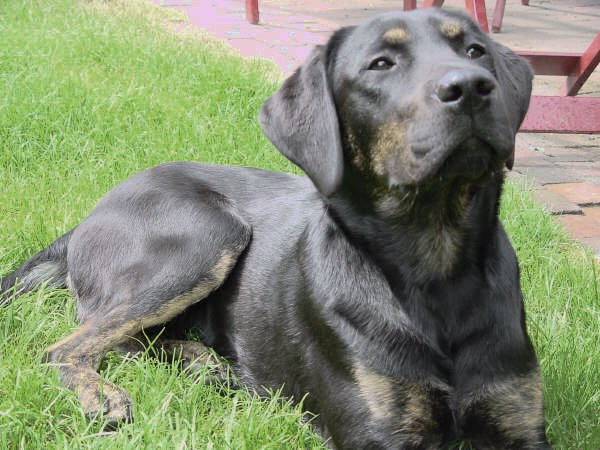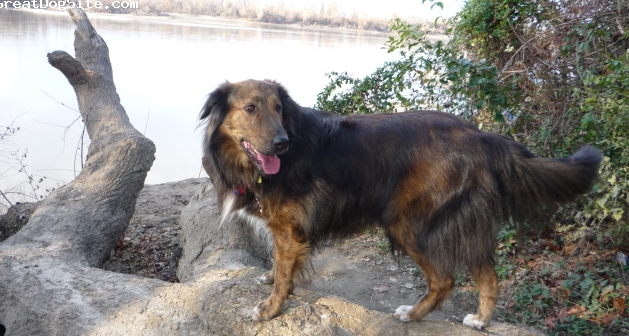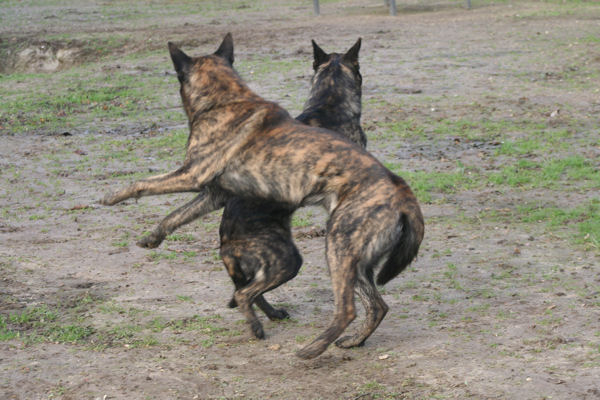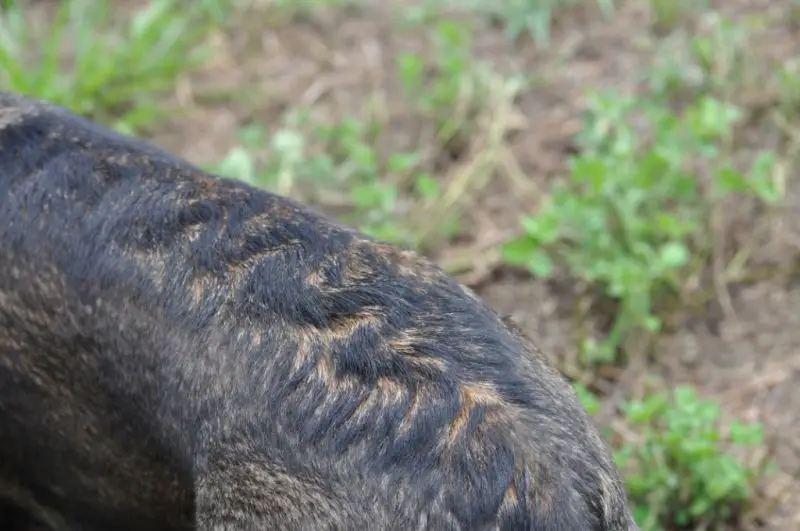
This is a placeholder text
Group text
by GSDlovergirl on 16 October 2012 - 19:10
In modern GSDs - particularly those animals with untraceable pedigree - it's possible that it's a dutch shepherd influence. However, one must remember that the Dutchie, GSD, and Belgian Shepherds more or less are believed to have shared the same "shepherd" type dogs in the beginning. It's just the different clubs aimed for different traits but the genes would have been there from the beginning.
Kind of like the St. John's Dog - said to be the founder of most retrievers and Newfoundlands. The difference in the descending / modern dogs depended entirely upon what the breeders wanted. However, you can occasionally come up with odd balls. Such as how you can get brindle Labs if you look carefully - they are black & tan brindle. Picture of a brindled lab

http://labradornet.com/brindletanpoint.html
http://labradornet.com/sonny_e.html
Soft Coated Wheatens for example are almost 100% supposed to be wheaten in coloring. Their pups look very agouti like until about 1 year of age.
 \
\However, and as apparent with this guy from european working lines, that isn't the case. Last I heard this dog had matured as a black & silver/tan. Not what is deemed standard and yet from pedigreed parents. Don't ask for the email as this was a while ago when I was doing genetics on terriers and their mis-marked pups. You will probably never find what I discovered about Wheatens and their mismarks on the internet... I had to email dozens upon dozens of breeders to even get about 15-18 responses back...
The only thing I can say is that for being one of the most popular dog breeds there really isn't that much research into the GSD itself and its genetics. People accept the given standard and would prefer not to talk of the mismarks, the oddities, etc. Just sell them off as pets and not mention a thing about them - ruins the breeders' rep after all.
by GSDlovergirl on 16 October 2012 - 19:10
boxer
 she is a reverse brindle, the darkest sort of brindle you can get
she is a reverse brindle, the darkest sort of brindle you can gethttp://www.saboxer.co.za/boxer_colours.html
 mix long hair
mix long hairhttp://www.greatdogsite.com/photos/gallery/Gollie/?index=1
 dutchies
dutchieshttp://www.dutchshepherdforum.com/viewtopic.php?f=56&t=1509
Some like the dutchies are obvious brindle but at passing glance neither the mix breed nor the boxer are obvious brindle dogs.
by Dawulf on 16 October 2012 - 20:10
by jaggirl47 on 16 October 2012 - 21:10
I had my bitch tested through them to find out if she was genetically black or a melanistic bi-color. She had tan toes as young as 8 weeks and has increasingly shown more tan. She looks like a bi.
She is not a brindle. Her tests came back as kyky/aa, a full recessive black dog. When I spoke with the lab they informed me that they believe bleedthru is a gene possibly passed by the sire. They have not yet found that out.
by BlackthornGSD on 16 October 2012 - 23:10
Christine.
by Elkoorr on 17 October 2012 - 01:10
by BlackthornGSD on 17 October 2012 - 01:10
Christine
by Elkoorr on 17 October 2012 - 04:10
Dawulf, I found a pic that shows the wavy stripe pattern on Tunguska.

by BlackthornGSD on 17 October 2012 - 05:10
Apparently, this is a saddle back dog with brindle markings on the legs. I would think a sable GSD would have the brindle on the tan areas (legs) too.... but not sure.Unsure though about at dogs that have kbr present, how would this be expressed, if at all?
Christine
by GSDlovergirl on 17 October 2012 - 09:10
The reason that Labs can have brindles crop up is that Kb can hide Kbr--so you could have generations of KbKbr ancestors with no brindle showing up until bred to another KbKbr and then you get KbrKbr -- brindle puppies. And there is no doubt that the foundation of the breed showed brindles--but it's easy to breed away from a dominant color--you just don't breed to it. So, how would the gene "hide" in generations of non-brindle ancestors?
Black in GSD works the same way, if not worst given as GSDs have two types of black. Labs have one, Kb.
Similarly it is unknown what brindle + agouti/sable makes and/or appears as so it is possible that the darker or more heavily marked sable GSDs are carrying brindle somewhere in their genetics.
Bi-colors and blanket types can likewise hide brindle unless really examined due to the small amount of tan that is actually visible in either coloration - a black & tan would be glaringly brindle.
True black sables are said to be some sort of a co-dominance between aw / sable and a / recessive black.

The website - facebook - claims this to be a DDR black sable.
http://www.facebook.com/photo.php?fbid=10151017085004019&set=o.70626018114&type=1&relevant_count=1&ref=nf
An animal marked that richly is going to disguise a lot unlike closely examined.
Similarly most show line GSDs are highly and heavily inbred - not to start anything - but I've seen sires on Pedigree that has supposedly sired hundreds of offspring. A high inbreeding cofactor is going to eliminate unusual traits - brindle - in show line dogs as they are bred to fit the standard as close as possible.
Old line patrol dogs / DDR - Czech \ and high level working animals / bloodlines are more than likely to carry unusual traits - brindle - than show animals.
Contact information Disclaimer Privacy Statement Copyright Information Terms of Service Cookie policy ↑ Back to top




